Atlantic Hurricane Season 2021
This hurricane season has been very active, especially in August and September. On August 29th, Hurricane Ida became one of the strongest hurricanes, by wind speed, to make landfall in Louisiana with 150mph sustained winds. Ida was the second major hurricane of the Atlantic hurricane season. There are strong ties between climate change and earlier, more destructive Atlantic hurricanes. The hurricane season forecasts of both Colorado State University and the National Oceanic and Atmospheric Administration predict above-normal activity. The initial list of storm names was exhausted in late October as Wanda formed in the north Atlantic.
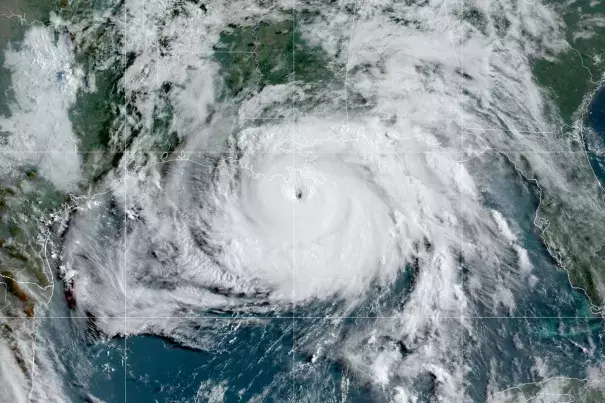
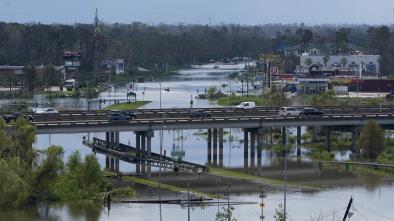
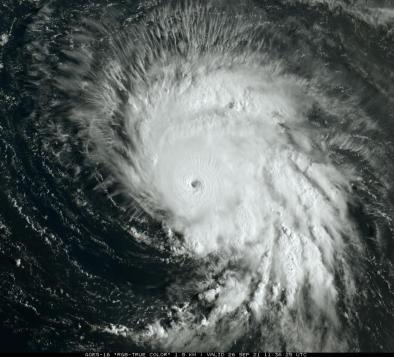
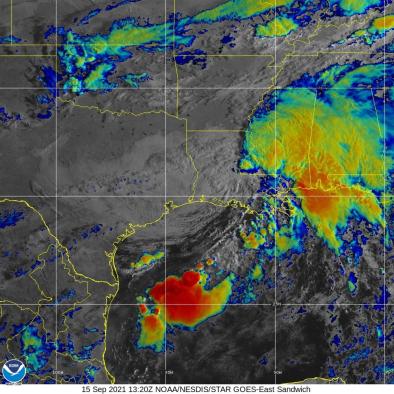
Climate science at a glance
- Climate change is fueling extreme rainfall, increasing the risk of hurricane flooding.
- Hurricanes get their energy by siphoning moisture and energy from warm ocean waters.
- Due to ocean warming, a greater proportion of tropical cyclones around the world are attaining major storm intensity.[1]
- Climate change has been linked to an increase in the frequency of hurricanes in the North Atlantic.[2]
- Sea level rise enables hurricane storm surges to reach further inland and cause more flooding.
- From 2016 to 2018, rain pushed aside storm surge as the top source of hurricane-related deaths.[3][4]
- Storms attained Category 5 strength in five straight years from 2016 through 2020 for the first time on record in the satellite era of storm monitoring (dating to the 1960s).
- Infrastructure built to withstand the storms of the past can collapse as new extremes overwhelm and push infrastructure past design thresholds.
Background information
What factors influence hurricane development?
Hurricane development requires heat energy from the ocean and low wind shear. Wind shear is often the most critical factor controlling hurricane formation and destruction. In general, wind shear refers to any change in wind speed or direction along a straight line. In the case of hurricanes, wind shear is important primarily in the vertical direction, from the surface to the top of the troposphere. When wind speed and direction changes significantly with height, this creates a shearing force that tends to tear storms apart. Wind shear is often low during the summer and fall from the coast of Africa through the Caribbean where Atlantic hurricanes form, increasing the chance of hurricane formation.
What were recent seasons like and how were communities impacted?
There have been a record-breaking five consecutive years - 2016 to 2020 - with at least one Category 5 storm in the Atlantic, extending the record stretch – 2016 to 2020 – to five years. The previous record was set from 2003 to 2005.[5]
So far in 2021, there have been six hurricanes, with three of them being major. The strongest system to make landfall in the United States this season has been Hurricane Ida, which impacted Louisiana as a Category 4 hurricane with 150mph sustained winds. The storm caused widespread destruction in SE Louisiana, as some costal communities were described as "uninhabitable" in the days after the storm struck.
In 2020, Hurricane Laura made landfall in western Louisiana as a Category 4 storm with 150 mph winds – the strongest landfalling hurricane in Louisiana history, and the fifth-strongest hurricane on record to make a continental US landfall. During the most active November of any hurricane season on record, Category 4 hurricanes Eta and Iota made landfall on Nicaragua’s Caribbean coast just 15 miles apart from each other in less than two weeks. It is unprecedented for two Atlantic category 4 hurricanes to make landfall so close together, in such little time. The storms had catastrophic impacts across Central America.
2019's Hurricane Dorian tied for the second-strongest storm recorded in the Atlantic Ocean, with winds of 185 mph. Hurricane Michael in 2018 made landfall at the Florida Panhandle at Category 5 strength making it one of the strongest landfalling hurricanes in US history. In 2017, Hurricanes Harvey, Irma and Maria ranked among the costliest hurricanes in history and affected millions of people in Texas, Louisiana, southwest Florida, North Carolina and Puerto Rico.
The impacts of recent storms disproportionately harmed poor communities, black communities, and communities of color. These communities in the US and elsewhere contribute the least to the emissions that cause climate change but stand to suffer the most because of systemic and structural inequities that keep incomes low, make neighborhoods vulnerable to flooding, and limit access to medical care.[6] Poor people and people of color were disproportionately harmed during Hurricanes Katrina, Harvey, and Florence.
Climate signal breakdown
Climate signal #1: Increased storm surge
Climate change can lead to increases in storm surge due to rising seas, increasing storm size, and increasing storm wind speeds.[7][8] Historically, storm surge has been the most important impact of tropical cyclones in coastal regions.[7] From 1963 to 2012, storm surge caused 49 percent of hurricane deaths, with rain accounting for 27 percent.[3] However, from 2016 to 2018, extreme precipitation, not storm surge, was the top source of hurricane-related deaths.[4]
Climate change has already contributed about 6.3 inches (0.16 meters) to global sea level rise,[9] and this has dramatically amplified the impact of hurricanes by increasing baseline elevations for storm surge.[10][11][12][13] A small vertical increase in sea level can translate into a very large increase in horizontal reach by storm surge depending upon local topography. Storm surge worsened by climate change increased the area flooded and infrastructure damaged during Hurricanes Florence,[14] Sandy,[11] and Katrina.[12]
Observations consistent with climate signal #1
- Hurricane Ida produced a storm surge of over 7 feet at Shell Beach, LA.
Climate signal #2: Extreme precipitation
One of the clearest changes in weather globally is the increasing frequency of extreme precipitation events. Warmer air can hold more moisture, which increases the amount of water available for storms to dump out as rain.[15] The fingerprint of global warming has been identified in increasing hurricane rainfall rates.[7]
Storms reach out and gather water vapor over regions that are 10-25 times as large as the precipitation area, thus multiplying the effect of increased atmospheric moisture.[15] As water vapor condenses to form clouds and rain, the conversion releases heat that adds buoyancy to the air and further fuels the storm.[16] This increases the gathering of moisture into storm clouds and further intensifies precipitation.[15]
Over the period from 1994-2008, extreme precipitation events linked to hurricanes accounted for more than 33 percent of the observed increase in heavy events across the US.[17] The Southeast in particular saw a 40 percent increase in the amount of precipitation falling in the heaviest events, and 100 percent of this increase is linked to hurricane events.[17]
Scientists have found that global warming increased rainfall for many individual tropical storms and hurricanes, including:
| Ivan (2004) | Katrina (2005) | Sandy (2012) | Harvey (2017) |
 |  | :format(png)/cdn.vox-cdn.com/assets/1688223/baanaerialnyc.png) | :format(jpeg)/cdn.vox-cdn.com/uploads/chorus_image/image/56417705/840239148.0.jpg) |
| [18] | [18][19] | [20] | [21][22][23][24][25] |
| Irma (2017) | Maria (2017) | Florence (2018) | Imelda (2019) |
 |  |  | 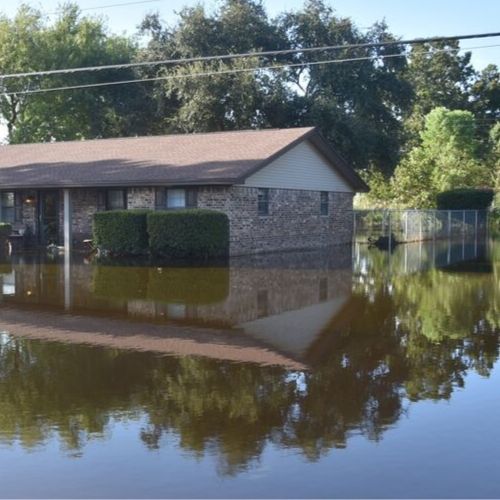 |
| [18] | [18] | [26][27] | [28] |
Observations consistent with climate signal #2
- In mid-June, Tropical Storm Claudette dumped over 10 inches of rain near Slidell, Louisiana, leading to severe flash flooding.
- In mid-August, the remnants of Tropical Storm Fred caused nearly a foot of rain to fall in western North Carolina.
- On August 21st, Tropical Storm Henri produced nearly 2 inches of rain in just one hour in New York City's Central Park.
- The night of September 1st into the early morning hours of September 2nd, the remnants of Hurricane Ida produced up to 10" of rain in the northeast US, leading to widespread flooding in the region.
Climate signal #3: Intense Atlantic hurricane frequency increase
Due to global warming and the corresponding increase in global ocean temperatures, a greater proportion of tropical cyclones around the world are attaining major storm intensity.[1][29] The close correlation between observed trends in recent sea surface temperatures and observed trends in the intensity of tropical cyclones reflects the link between warming ocean temperatures and stronger storms.[30][31][32]
Scientists have also identified the fingerprint of climate change in the increase in the number of hurricanes occurring in the North Atlantic since the 1980.[2] The Fourth National Climate Assessment states, “Increases in greenhouse gases and decreases in air pollution have contributed to increases in Atlantic hurricane activity [frequency and intensity] since 1970.”[33]
Observations consistent with climate signal #3
- On July 1st, Tropical Storm Elsa became the earliest fifth named storm on record in the Atlantic - breaking the record set just last year during the exceptionally active 2020 season.
- On August 29th, Hurricane Ida became a Category 3 major hurricane on its way to eventually intensifying into a high-end Category 4 storm.
- On September 3rd, Hurricane Larry became a Category 3 major hurricane. This is only the fourth time in the satellite era there have been three major hurricanes by September 3rd (1969, 2004, and 2005).
- In mid-September, Hurricane Nicholas became the 8th landfalling named storm in the United States during the 2021 season, well above the annual average of three.
- In late September, Hurricane Sam became the second Category 4 of the 2021 hurricane season.
- Hurricane Sam spent 150 hours at Category 4 intensity, becoming the 4th longest duration Category 4 or 5 hurricane on record in the Atlantic.
- 2021’s Atlantic season marks the sixth season in a row with above-average activity. By mid-October, accumulated cyclone energy, or ACE, which is proportional to storm intensity and duration, was 52 percent ahead of average in the Atlantic.
Climate signal #4: Hurricane steering change
Hurricane motion is broadly governed by large scale weather patterns and air flows called steering winds or steering currents. Hurricane steering is one of many measures of hurricane activity in the Atlantic that has changed since the 1970s.[6][34]
Observations consistent with climate signal #4
- In August, Tropical Storm Henri was the first tropical cyclone to make landfall in Rhode Island since Hurricane Bob in 1991.
Climate signal #5: Increase in rapid intensification
Climate change is making dangerous rapidly intensifying hurricanes more common. Many recent Atlantic hurricanes (2020's Laura and also Harvey, Irma, Maria, and Michael) have undergone periods of rapid intensification before making landfall. A study from 2018 shows an increase of 4.4 mph per decade in Atlantic hurricane intensification from 1986 to 2015.[35] A 2019 study similarly shows an increase in rapid intensification during the period 1982 - 2009 and finds the trend can only be explained by including human-caused climate change as a contributing cause.[36] The largest change occurred in the strongest 5 percent of storms: for those, 24-hour intensification rates increased by about 3 – 4 mph per decade between 1982 – 2009.
Observations consistent with climate signal #5
- On August 21, Hurricane Grace rapidly intensified into a Category 3 major hurricane shortly before landfall near Tecolutla, Mexico.
- In late August, Hurricane Ida rapidly intensified from a Category 1 to a Category 4 major hurricane within 24 hours.
- In September, Hurricane Sam rapidly intensified from a Category 1 to a Category 4 major hurricane, becoming the second storm of the season to have maximum sustained winds of 150mph.









